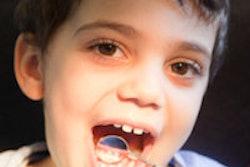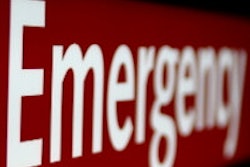
An ABC News story that aired July 12 took a hard-hitting look at the potential risks of pediatric dental sedation, alleging that, in some cases, undertrained dentists motivated primarily by profits are unnecessarily sedating young patients for routine procedures.
Even well-trained dentists have been "unable" or "ill-equipped" to deal with such scenarios involving pediatric patients, according to the report, which characterized the matter as a growing problem.
The story appeared on "Nightline" and "World News With Diane Sawyer."
The segment highlighted weekend training courses that pitch dental anesthesia as a way to increase dentists' bottom line. The courses were cited as the source of "explosive growth" in the number of dentists using anesthesia while treating patients, claiming that some 18,000 U.S. dentists have signed up for these courses in the last five years.
"This is something that is being presented to the practitioners, the dental community, as a very easy thing to do, and nothing could be further from the truth," Norbert Kaminski, DDS, told ABC News. Dr. Kaminski is a dental anesthesiologist in Detroit and an advocate for tougher standards for dentists who work with sedation.
Brochures for one program pitched, "Give us three days, and we'll teach you both adult and pediatric protocols -- serving patients from ages 5 to 95 -- that you can take home and implement immediately," ABC News reported. While the training program encourages an additional "pediatric advanced life support" course, Indru Punwani, DDS, an American Academy of Pediatric Dentistry (AAPD) spokesman, told ABC News that a weekend course is inadequate if it is the only training the dentist has received.
“To perform sedation does require significant training, either in a pediatric residency program or through a lengthy series of courses. ...”
— Joel Berg, DDS, president of the
American Academy of Pediatric
Dentistry
Sedation is extremely safe when proper procedures are followed, Joel Berg, DDS, president of the AAPD and a professor of pediatric dentistry at the University of Washington School of Dentistry, emphasized in an interview with DrBicuspid.com. This includes adequate training on proper case selection, delivery of medication, appropriate use/dosing, and proper monitoring of the patient during and after the procedure.
(Click here to read the AAPD's guidelines on sedation, developed in conjunction with the American Academy of Pediatrics.)
"To perform sedation does require significant training, either in a pediatric residency program or through a lengthy series of courses where there is mentoring and calibration," he said. "It is hard to imagine that in a matter of a few days without any previous training or experience that it would provide enough training."
The ABC story also neglected to point out that sedation is a necessary part of treatment for some children, Dr. Berg added.
"Often, children of a very young age have many cavities and are 'precooperative,' so the only way you can treat them is with sedation or general anesthesia," he said. "In these cases, these are medically necessary procedures that have to be done safely and effectively, with proper training."
Emergency preparedness critical
The ABC story also showcased the work of the Raven Maria Blanco Foundation (RMBF) and its ongoing mission to bring medical emergency awareness to the dental community. The foundation -- founded in 2007 in honor of 8-year-old Raven Maria Blanco, who died after receiving 1300 mg of chloral hydrate and 30 mg of hydroxyzine prior to having her teeth cleaned and calcium deposits removed -- maintains a list of children who have died while undergoing sedation for dental work.
In a statement issued following the ABC News broadcast, RMBF emphasized the need for dental practices to be better-prepared for catastrophic events, and took the ADA to task for not having established guidelines, policies, or a position statement regarding emergency preparedness.
"Instead, the ADA offers an assortment of journal articles on medical emergencies and urges its members to review them and then choose, on an ala carte basis, those concepts they believe would benefit their office," the RMBF statement said. "This approach is haphazard, at best."
While RMBF is committed to working with the ADA, change is most likely to occur through pressure from the public, the foundation added.
"I've been trying to work with the ADA for quite some time to establish standards in all dental offices, but they say it’s not their responsibility to set standards,” Nicole Cunha, RMBF executive director, said in an interview with DrBicuspid.com. "It's been frustrating but we're trying to stay positive. I hope this pushes them to step it up in that area because it is lacking."
RMBF also addressed weekend training courses in anesthesia, saying that "the story raised a legitimate question concerning the applicability of teaching pediatric oral sedation in such a limited time period without actual clinical practice." It also defended the practitioners who attended the courses and said that ABC News was "unfair to impugn the motives of the individual attendees."
Cunha said that, overall, she was disappointed in the way the story focused primarily on greed. "I had hoped it would focus on preparedness," she said.
RMBF encourages dentistry to adopt its Six Links of Survival checklist:
- Adequate training of the dentist
- Training of the entire staff
- Periodically holding mock emergency drills
- Having a written emergency plan
- Stocking appropriate medications
- Maintaining necessary emergency equipment
Three dental schools and numerous local dental associations have already adopted these guiding principles, according to Cunha.
"We're trying to take the high road at RMBF -- we're not pointing the finger at doctors," she said. "We want practices to know what tools they need to be properly prepared. And our goal is to help parents recognize a prepared practice."



















